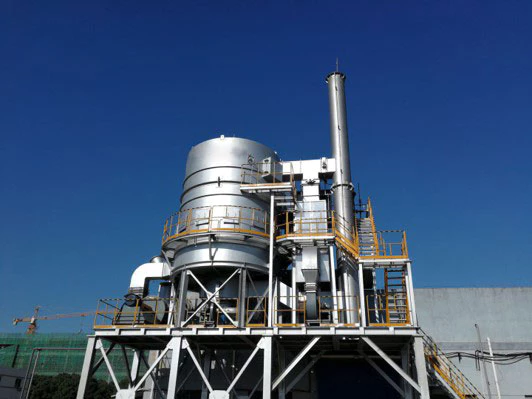How to monitor the performance of an RTO for air pollution control?
вступ
Regenerative Thermal Oxidizers, or RTOs, are widely used in industries to treat volatile organic compounds (VOCs) and other air pollutants. As RTOs are a significant investment, it’s imperative to monitor their performance to ensure that they are operating at maximum efficiency. In this article, we will discuss various ways to monitor the performance of an RTO for air pollution control.
Regular Inspection
Regular inspection is one of the most important ways to monitor RTO performance. Inspections should be done at least once every six months, and ideally every three months. During inspections, the technician should check the RTO for any wear and tear, damage, or corrosion. Any issues should be repaired immediately to avoid any long-term damage to the system.
Visual Inspection
A visual inspection is an essential part of regular inspection. During the inspection, a technician should check the combustion chamber, heat exchanger, and valves. They should look for any signs of corrosion, leaks, or other damage. The technician should also inspect the RTO’s insulation to ensure that it is in good condition.
Performance Testing
Performance testing should be done once a year to ensure that the RTO is operating efficiently. During the test, the technician should measure the RTO’s destruction efficiency, energy consumption, and temperature profile. The test will help identify any inefficiencies in the system and provide an opportunity to optimize the performance of the RTO.
Continuous Emission Monitoring System (CEMS)
CEMS is a useful tool to monitor the RTO’s performance continuously. CEMS equipment measures the concentration of pollutants in the RTO’s exhaust gas stream continually. The equipment provides real-time data that can be used to optimize the RTO’s performance and identify any issues.
Process Data Monitoring
Process data monitoring involves tracking the RTO’s operating conditions, including temperature, pressure, and flow rate. The data can be used to identify any issues with the RTO’s operation and optimize its performance. Process data monitoring can be done manually or using automated systems.
Maintenance and Repair
Maintenance and repair are essential to ensure the RTO’s optimal performance. Regular maintenance should include cleaning the system and replacing any worn-out parts. Any repairs should be done immediately to avoid any long-term damage to the system.
Висновок
In conclusion, monitoring the performance of an RTO for air pollution control is critical to optimizing its efficiency. Regular inspections, performance testing, CEMS, process data monitoring, and maintenance and repair are all essential ways to monitor the RTO’s performance. By monitoring the RTO’s performance regularly, it is possible to identify any issues and optimize the system’s operation.


Про нашу компанію
We are a high-tech enterprise specializing in comprehensive treatment of volatile organic compounds (VOCs) waste gas and carbon reduction and energy-saving technology. Our core technologies include thermal energy, combustion, sealing, and self-control, with capabilities in temperature field simulation, air flow field simulation modeling, ceramic heat storage material performance, molecular sieve adsorption material comparison selection, and VOCs organic high temperature incineration oxidation characteristics experimental testing.
Our RTO technology R&D center and waste gas carbon reduction engineering technology center are located in Xi’an, and we have a 30,000-square-meter production base in Yangling. As the world’s leading manufacturer of RTO equipment and molecular sieve rotary equipment, our core technical team comes from the Research Institute of Liquid Rocket Engines of Aerospace (Aerospace Sixth Academy). We currently have more than 360 employees, including more than 60 research and development technology backbone, including 3 senior engineer-level researchers, 6 senior engineers, and 47 thermodynamic doctors.
Our core products include the rotary valve-type heat storage oxidation incinerator (RTO) and molecular sieve adsorption concentration rotary wheel. Combined with our own environmental protection and thermal energy system engineering technical expertise, we can provide customers with comprehensive solutions for industrial waste gas treatment and thermal energy utilization and carbon reduction.

Сертифікати, патенти та відзнаки
We have obtained certifications and qualifications such as the Intellectual Property Management System Certification, Quality Management System Certification, Environmental Management System Certification, Construction Industry Enterprise Qualification, High-tech Enterprise, and patents such as the Rotary Heat Storage Oxidation Furnace Rotary Valve Patent, Rotary Heat Storage Incineration Equipment Patent, and Disc-shaped Molecular Sieve Rotary Wheel Patent, among others.

How to Monitor the Performance of an RTO for Air Pollution Control
When choosing the appropriate RTO equipment for air pollution control, there are several factors to consider:
- Determine the characteristics of the waste gas
- Understand local regulations and set emission standards
- Evaluate energy efficiency
- Consider operation and maintenance
- Budget and cost analysis
- Choose the appropriate type of RTO
- Consider environmental and safety factors
- Performance testing and verification
It is important to carefully evaluate each of these factors in order to select the most effective RTO for your specific needs.
Our RTO Air Pollution Control Service Process
Our RTO air pollution control service process includes:
- Initial consultation, on-site inspection, and needs analysis
- Solution design, simulation modeling, and scheme review
- Customized production, quality control, and factory testing
- On-site installation, commissioning, and training services
- Regular maintenance, technical support, and spare parts supply
Our professional team works closely with each client to customize an RTO solution that meets their specific requirements. We are committed to providing a one-stop solution for RTO air pollution control.
